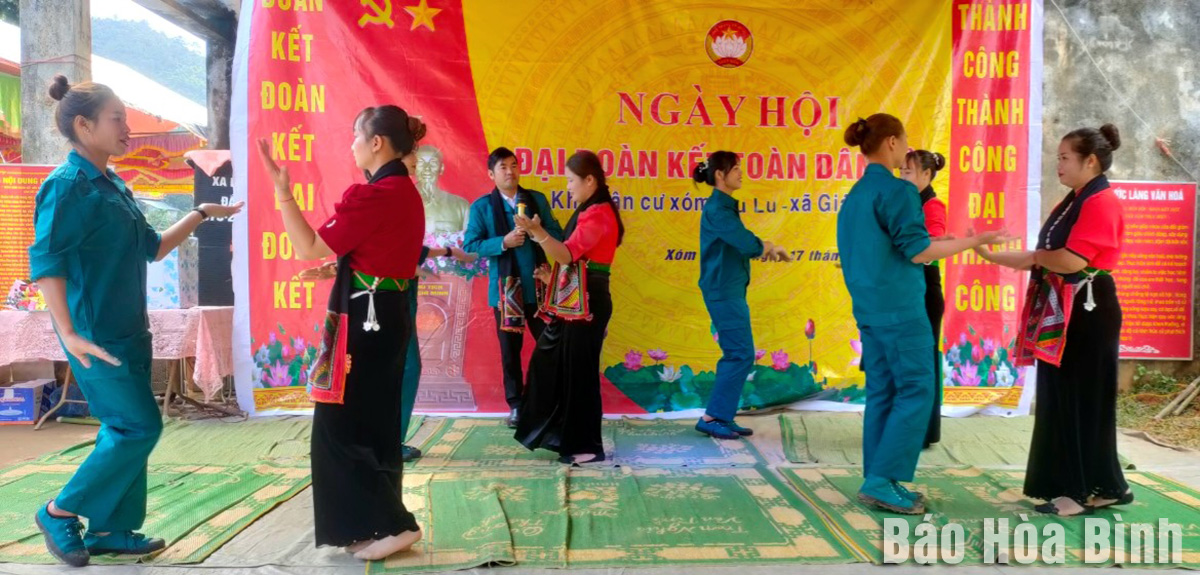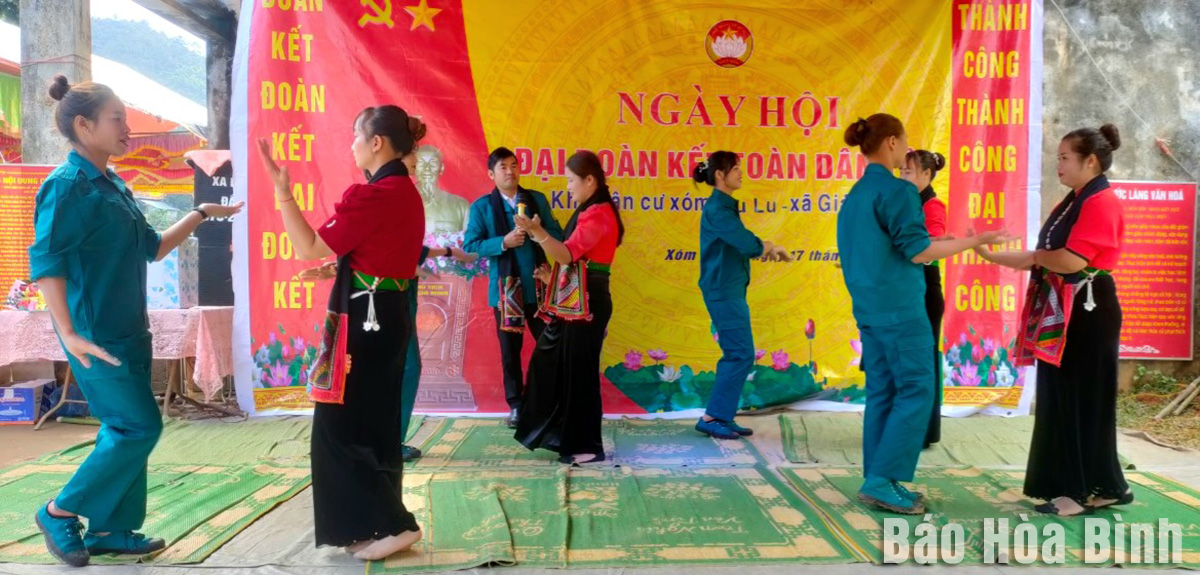
In recent years, based on the community tourism models of the Dao people in Cao Son commune and the Muong people in Hien Luong and Tien Phong communes, the authority of Da Bac district has built a model of this kind in the Tay ethnic community in Thu Lu hamlet, Giap Dat commune.
Although this model is new, with its potential,
available advantages and the response from the people, it promises to create a
new livelihood for the Tay people here.
A dance performance by Thu Lu hamlet’s
art troupe in Giap Dat commune (Da Bac district).
Thu Lu hamlet is 60km from Da Bac district’s
centre. It is home to 69 households of Tay people.Local residents have
preserved their traditional stilt houses, cultural identity, and typical
customs and practices such as language, writing, costumes, traditional weaving,
and rich cuisine of the Tay ethnic people.
In addition, the local natural forest is
preserved with many old trees along with a stream starting from Da Mac
waterfall. These are suitable for trekking and mountain climbing tours.
There are 49 three-room style stilt houses in
the hamlet which were built on large round wooden pillars and covered with palm
roofs, representing the harmony with nature.
Vi Van Luyen in Thu Lu hamlet said he hopes the
traditional cultural identity of the Tay people would open a new direction for
economic development via community tourism. He added that by doing so,
the culture of the Tay ethnic group, which has been preserved for generations,
will also become more popular.
Xa Huu Thuc, Vice Chairman of the Giap Dat
commune People's Committee, expressed the hope that after becoming operational,
the model will help shift the labour structure from agricultural production to
tourism and trade services, creating opportunities for cultural exchange
between visitors and the community, and contributing to raising awareness of
environmental protection and preservation of cultural identity among locals.
In the coming time, the district's People's
Committee will continue to direct relevant agencies to call on potential
investors to invest in community tourism sites in the locality, aiming to
develop the hamlet into an attractive tourist destination for domestic and
international tourists, thus creating jobs, increasing incomes for locals and shifting
the locality’s economic structure.
It will also pay attention to developing a
project for planning and preserving the traditional cultural space of the Tay
ethnic group in connection with tourism development.
A diverse chain of eco-tourism and resort destinations concentrated in Hoa Binh city and the districts of Tan Lac, Da Bac, and Luong Son… Along with the launch of several key high-quality resort tourism projects, these developments have reshaped the landscape and enhanced the appeal of Hoa Binh as a travel destination.
Boasting diverse terrain, a mild climate, and rich natural resources, Cao Phong district is increasingly asserting its place on Vietnam’s tourism map, attracting both domestic and foreign visitors. The district is renowned for its stunning landscapes, majestic mountains, a crystal-clear hydropower lake, and the unique cultural identity of local ethnic groups.
With its pristine landscapes, unique cultural heritage of Muong ethnic minority, and an expanding range of visitor experiences, Tan Lac district of Hoa Binh has fast become a captivating destination for both domestic and international tourists.
Until now, Sung village in Cao Son commune, Da Bac district remains the only Dao ethnic community in Hoa Binh province to develop a community-based tourism model. Beyond its untouched natural landscapes, cultural identity serves as the cornerstone attraction for visitors.
Alongside the diverse cultural identities of the Kinh, Muong, Tay, Thai, Dao, and Mong ethnic people, Hoa Binh province is also renowned as the "capital" of the northwestern Vietnamese cuisine, offering unique and distinctive dishes. At festivals, during Lunar New Year (Tet), or on significant family or community occasions, special dishes are prepared, leaving a lasting impression on visitors.
A Phong Linh (Yellow Tabebuia) flower garden in Thang village, Thach Yen commune, Cao Phong district is currently in full bloom, drawing a large number of visitors.



